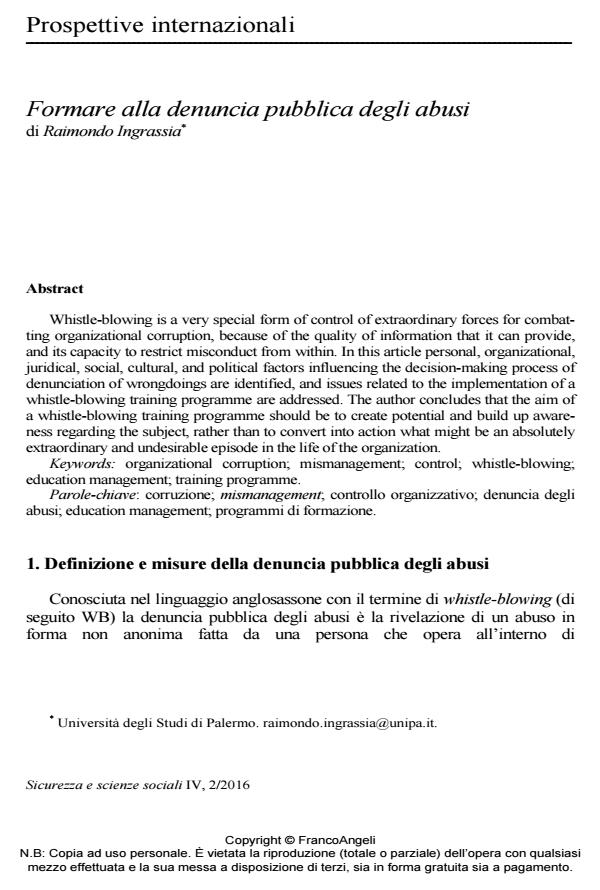Formare alla denuncia pubblica degli abusi
Titolo Rivista SICUREZZA E SCIENZE SOCIALI
Autori/Curatori Raimondo Ingrassia
Anno di pubblicazione 2016 Fascicolo 2016/2
Lingua Italiano Numero pagine 16 P. 151-166 Dimensione file 459 KB
DOI 10.3280/SISS2016-002011
Il DOI è il codice a barre della proprietà intellettuale: per saperne di più
clicca qui
Qui sotto puoi vedere in anteprima la prima pagina di questo articolo.
Se questo articolo ti interessa, lo puoi acquistare (e scaricare in formato pdf) seguendo le facili indicazioni per acquistare il download credit. Acquista Download Credits per scaricare questo Articolo in formato PDF

FrancoAngeli è membro della Publishers International Linking Association, Inc (PILA)associazione indipendente e non profit per facilitare (attraverso i servizi tecnologici implementati da CrossRef.org) l’accesso degli studiosi ai contenuti digitali nelle pubblicazioni professionali e scientifiche
Whistle-blowing is a very special form of control of extraordinary forces for combatting organizational corruption, because of the quality of information that it can provide, and its capacity to restrict misconduct from within. In this article personal, organizational, juridical, social, cultural, and political factors influencing the decision-making process of denunciation of wrongdoings are identified, and issues related to the implementation of a whistle-blowing training programme are addressed. The author concludes that the aim of a whistle-blowing training programme should be to create potential and build up awareness regarding the subject, rather than to convert into action what might be an absolutely extraordinary and undesirable episode in the life of the organization.
Parole chiave:Corruzione; mismanagement; controllo organizzativo; denuncia degli abusi; education management; programmi di formazione.
Raimondo Ingrassia, Formare alla denuncia pubblica degli abusi in "SICUREZZA E SCIENZE SOCIALI" 2/2016, pp 151-166, DOI: 10.3280/SISS2016-002011